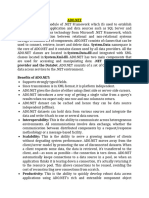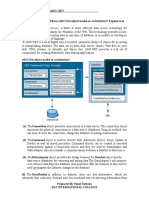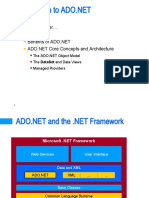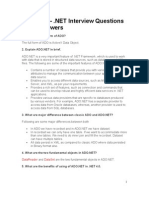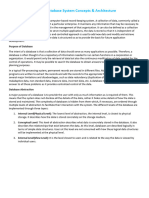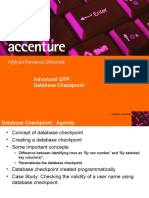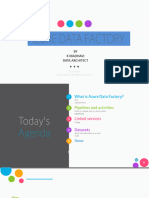0% found this document useful (0 votes)
18 views18 pagesUnit - V
The document provides an overview of ADO.NET, a data access framework for C# that utilizes a disconnected data architecture to interact with various data sources like Microsoft SQL Server and XML. It outlines key components such as Data Providers, DataSets, and the Entity Framework, emphasizing features like LINQ for improved data querying and manipulation. Additionally, it describes the structure and functionality of various ADO.NET classes and objects, including Connection, Command, DataReader, and DataAdapter.
Uploaded by
Chandan M NCopyright
© © All Rights Reserved
We take content rights seriously. If you suspect this is your content, claim it here.
Available Formats
Download as PPTX, PDF, TXT or read online on Scribd
0% found this document useful (0 votes)
18 views18 pagesUnit - V
The document provides an overview of ADO.NET, a data access framework for C# that utilizes a disconnected data architecture to interact with various data sources like Microsoft SQL Server and XML. It outlines key components such as Data Providers, DataSets, and the Entity Framework, emphasizing features like LINQ for improved data querying and manipulation. Additionally, it describes the structure and functionality of various ADO.NET classes and objects, including Connection, Command, DataReader, and DataAdapter.
Uploaded by
Chandan M NCopyright
© © All Rights Reserved
We take content rights seriously. If you suspect this is your content, claim it here.
Available Formats
Download as PPTX, PDF, TXT or read online on Scribd
/ 18






















